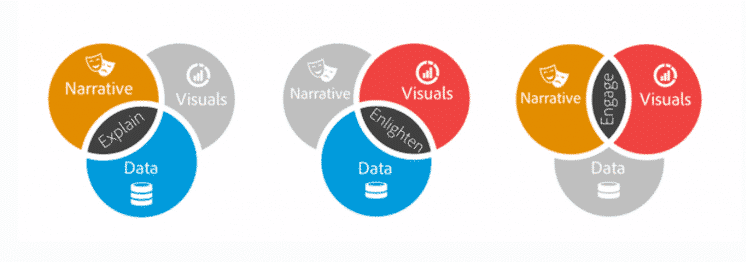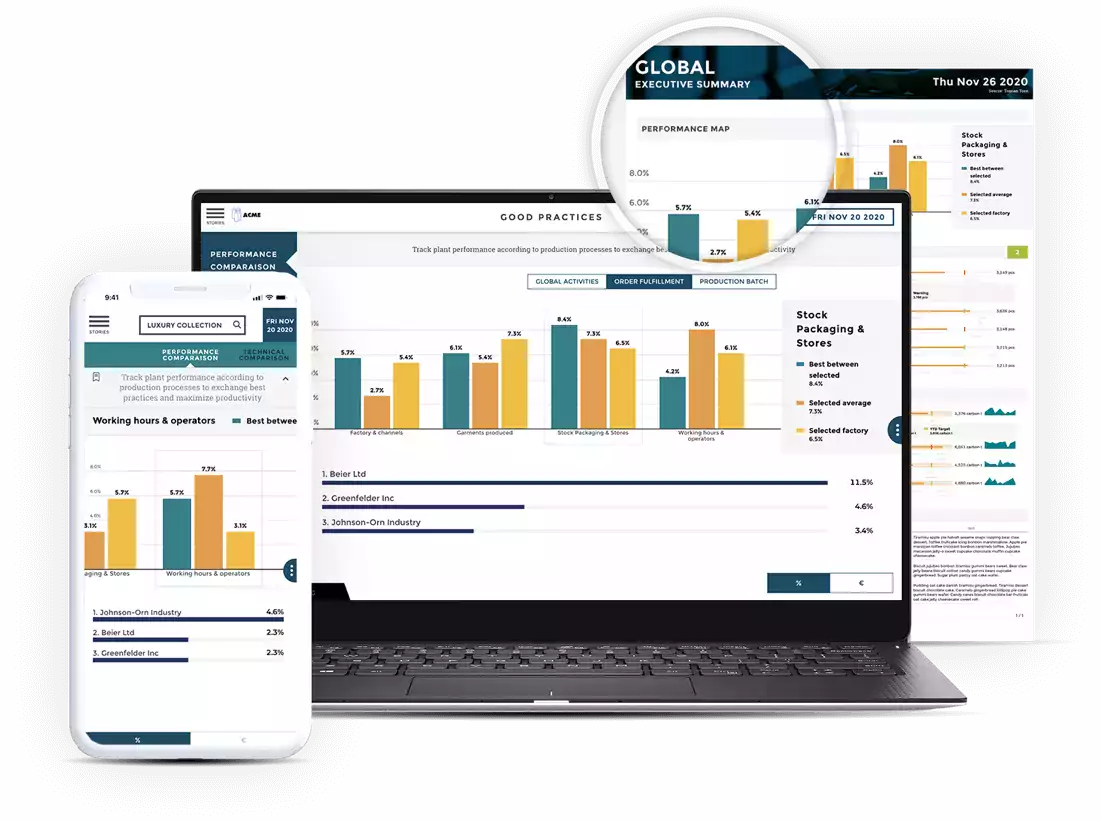Discovering key information is one thing, and communicating it is another entirely. Data Storytelling is an area of expertise that has quickly become a necessity for many businesses to be successful. And while the importance of collecting, processing, and analyzing data effectively is obvious, the ability to communicate it clearly and effectively is perhaps just as vital.
Turning data into action is, at its core, the primary objective of Data Storytelling. But what sets data storytelling apart from data visualization (or data viz)? Human communication. While data viz helps us better memorize and digest information, Data Storytelling helps to persuade and make informed business decisions. Fast.
TRANSFORMING DATA INTO A STORY
I've worked with and in many consulting firms which have all been wonderful experiences. I had the opportunity to get to know a lot of companies, understand best practices, process lots of data, and make it understandable for those that needed it most. But much of my time (and this was not unique to me) was spent in the weeds of Powerpoint and Excel. I spent hours trying to make sense of the data contained within, from which I generated stories (scenarios, retrospectives, analyses of company events, etc.) to facilitate decision-making for companies.
And the importance of telling stories, with data, is something that I think will always be around. Virtually anyone will be interested, or at least more interested, in your data and graphs if they tell a story, especially a story they are a part of and feel involved in. It is therefore necessary to personalize and contextualize data. Because without a story, it's just a bunch of 0s and 1s and, no matter how useful, won't be engaging.
THE IMPORTANCE OF DATA STORYTELLING
Data Storytelling brings together quantitative, cognitive and other sciences together to refine the science of communication.
The accumulation of data in the modern era has inexorably led to the emergence of self-service BI tools, facilitating access to data for more people. These tools have been leveraged in large part by data experts (or scientists), a profession that has only really emerged in the last 10 years as data has become more important for success.
But data manipulation, as we've mentioned, is one thing. The ability to communicate clearly and effectively is another and is one that shouldn't be underestimated.
And when Data Scientists aren't able to clearly communicate to all relevant stakeholders, their work is very limited in its impact. This results in an obvious loss of value for businesses. What's the point of investing in information systems and data architecture when it doesn't result in a positive business impact?
Data storytelling becomes a powerful way to equip and support teams, whether experts or non-technicals, with the ability to transform their data into stories that are engaging and well-received.
THE DIFFERENCE BETWEEN DATA VIZ AND DATA STORYTELLING
Let's illustrate the difference between Dataviz and Data Storytelling with a simple example.
Dataviz scenario:
I picked 8 apples and made 2 pies to sell.
Data Storytelling scenario:
I picked 8 apples from my grandfather's garden, who grew them naturally. The apples I harvested were transported by my grandfather and I in his hybrid car. We took them to a world-class kitchen where I invited the best cook in the country to make 2 apple pies from scratch, which were reserved for purchase by our town's mayor to give to his mother on Mother's Day. Want to know what he thought of them?
This example exhibits one of the key differences between the Dataviz and Data Storytelling: a compelling narrative (if you didn't find that compelling, I'm sorry). The point is, the 8 apples in my story (hopefully) became more interesting when they were part of a story. The same applies to any information: once contextualized and personalized, information makes sense to readers and piques their interest.
FROM DATAVIZ TO DATA STORYTELLING: THE INGREDIENTS
Let's look at the Data Storytelling equation in a more scientific light. Communicating information requires the combination of 3 primary elements: data, graphic representation, and narration.
Graphic representation of the elements of Data Storytelling
Source: Photo by Brent Dykes
-
when visuals are associated with data (in the case of Dataviz), it's brought to life. Without certain graphical representations, we'd be unable to understand certain information (e.g., a heat map of a shopping mall or a customer’s journey on a website)
-
when narration accompanies data, we're able to explain the importance of the information. Context and narrative are fundamental to enhancement.
-
when narration is accompanied by graphic representation, it boosts attention and engagement. This is pure storytelling. People need to read and go to the movies for entertainment. There’s a good reason why the entertainment market (books, shows, cinema, etc.) is worth several billion euros!
When data, graphics, and narratives are effectively combined (and balanced), Data Storytelling influences decision-making and drives positive change.
WHY DO WE NEED TO TELL STORIES: ISN’T DATAVIZ ENOUGH?
People often ask what Data Storytelling is for. Can it really revolutionize business decision-making? What's the point of making Data more appealing in the business context?
For the more expert users among us, telling stories might seem like a waste of time. It should be enough to present data. But fortunately or otherwise this assertion assumes that business decisions are made based on logic and rationale. But they’re not! Neuroscientists confirm that decisions are based on emotions, not logic.
Making data visually attractive is therefore not a question of art, but efficiency! Design is not an afterthought here. It helps to improve performance, to communicate, and to make the right decisions in less time than would otherwise be possible.
WHAT ARE THE ADVANTAGES OF DATA STORYTELLING OVER DATAVIZ?
If it's not already apparent, when we tell stories with data, we're creating a link between the information and the emotional centers of our brain. This has some interesting effects:
-
Information arouses interest: it helps to “connect the dots” and remove barriers (like the story of the apple pies I mentioned earlier)
-
Information becomes convincing: we often use storytelling to differentiate ourselves, and information is all the more convincing when it is based on data.
-
Information becomes easier to memorize: strong graphic representation often leads to better recall and retention. Viewers/readers can experience something analytically and emotionally at the same time.







